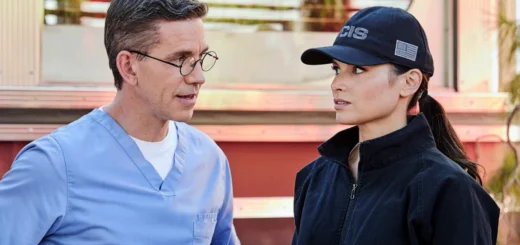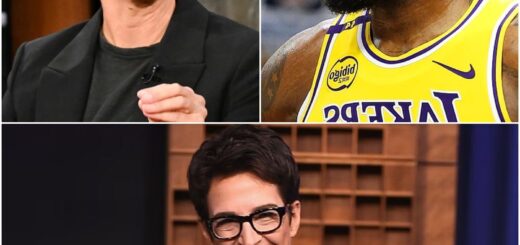Nick Nolte & Eddie Murphy on the set of 48 Hrs (1982)
Nick Nolte & Eddie Murphy on the Set of 48 Hrs (1982): A Groundbreaking Collaboration
In 1982, the release of 48 Hrs marked a pivotal moment in the action-comedy genre, introducing audiences to an unlikely yet dynamic pairing: Nick Nolte and Eddie Murphy. Directed by Walter Hill, the film became a seminal piece in the buddy-cop genre, though technically it diverged from that formula by casting one lead as a cop (Nolte’s Jack Cates) and the other as a criminal (Murphy’s Reggie Hammond). This high-energy partnership sparked a unique chemistry that would be key to the film’s success and solidified both Nolte and Murphy’s places in Hollywood history.
Eddie Murphy’s Breakout Role

For Eddie Murphy, 48 Hrs was a major turning point. Before the film, Murphy was best known as a young star on Saturday Night Live, where his biting humor and sharp improvisational skills had already set him apart. However, 48 Hrs was his film debut and marked his transition from television to the silver screen. In the film, Murphy’s character, Reggie Hammond, is a convict temporarily released from prison to help Nolte’s character, Jack Cates, track down a pair of cop killers.
Murphy’s performance was magnetic, blending humor with moments of genuine tension. His portrayal of Hammond exuded a charm that made the character not only likable but an essential piece of the film’s momentum. Murphy improvised many of his lines, demonstrating the quick wit that would become a hallmark of his career. His comedic timing, combined with his ability to navigate the action sequences, earned him widespread praise and launched him into superstardom almost overnight.
Nick Nolte’s Gritty Realism
At the time of filming, Nick Nolte was already an established star, known for his dramatic roles in films such as The Deep (1977) and North Dallas Forty (1979). His casting as the hard-edged, gravel-voiced detective Jack Cates was essential to the film’s gritty realism. Nolte’s character is a no-nonsense cop, battling cynicism and frustration while trying to solve a high-stakes murder case. His portrayal brought a level of seriousness and toughness that balanced out Murphy’s comedic brilliance, grounding the film in a raw, urban reality.
Nolte’s intensity stood in stark contrast to Murphy’s lightness, which is what made their dynamic so compelling. The interplay between Nolte’s methodical, measured approach and Murphy’s spontaneous energy created a natural tension that evolved as the film progressed. Nolte’s portrayal of a gruff detective helped redefine the archetype of the “tough cop” in 1980s cinema, adding layers of vulnerability and complexity.
On-Set Chemistry
Behind the scenes, the Nolte-Murphy collaboration was as interesting as what appeared on screen. Nolte, a serious actor trained in method techniques, had a more intense approach to his role. Murphy, on the other hand, was fresh off the comedy stage, bringing an improvisational and lighter energy to the set. This difference in styles could have created conflict, but instead, it fostered an intriguing dynamic.
Walter Hill, the film’s director, masterfully leveraged their differences, allowing Murphy the freedom to ad-lib and Nolte the space to react in real time. This interplay between Nolte’s serious, controlled character and Murphy’s fast-talking, humorous demeanor made for some of the film’s most memorable scenes, including the iconic moment in which Murphy’s character takes over a redneck bar, commanding the room with nothing but his wit and sheer bravado. The juxtaposition of Nolte’s gruff reactions to Murphy’s antics heightened both the tension and the comedic elements of the film.
The Cultural Impact of 48 Hrs
While 48 Hrs was not the first buddy film, it redefined the genre for the 1980s and beyond. The movie pioneered the idea of pairing two characters from vastly different backgrounds, forcing them to overcome their differences to achieve a common goal. In doing so, it set the stage for other films that followed, such as Lethal Weapon (1987), Tango & Cash (1989), and Rush Hour (1998). The formula has since been replicated numerous times, but 48 Hrs remains a standout for its originality and the raw, edgy performances from its two stars.
Moreover, 48 Hrs was significant for how it dealt with race. Though the film did not shy away from racial tensions — Cates frequently uses racial slurs towards Hammond — it also allowed Murphy’s character to give as good as he got. This mutual respect, or at least begrudging acknowledgment of each other’s skills, grew over the course of the film, which made their partnership feel earned rather than forced. By the end of the movie, both characters had evolved, and the audience had witnessed the growth of a professional and personal bond, a trope that became a staple in future buddy films.
Legacy of the Nolte-Murphy Duo
48 Hrs grossed over $78 million at the box office and was both a critical and commercial success. It catapulted Eddie Murphy to the forefront of Hollywood, leading to a series of hits throughout the 1980s, including Beverly Hills Cop and Coming to America. For Nolte, it was another successful film in a long career of dramatic roles, but it also showcased his ability to handle humor and action, expanding his range as an actor.
The success of 48 Hrs led to a sequel, Another 48 Hrs (1990), which attempted to recreate the magic of the original. While the sequel didn’t achieve the same critical acclaim, it further cemented the legacy of Nolte and Murphy’s on-screen partnership. Their collaboration is still regarded as one of the best in the buddy-cop genre, and 48 Hrs remains a benchmark for action-comedy films.
In conclusion, Nick Nolte and Eddie Murphy’s work on 48 Hrs is a testament to the power of contrasting personalities coming together on screen. Their collaboration defined a genre, influenced a generation of filmmakers, and provided audiences with a thrilling mix of humor, action, and raw emotion. Decades later, 48 Hrs still stands as an iconic film that showcases the extraordinary talents of its two leads


